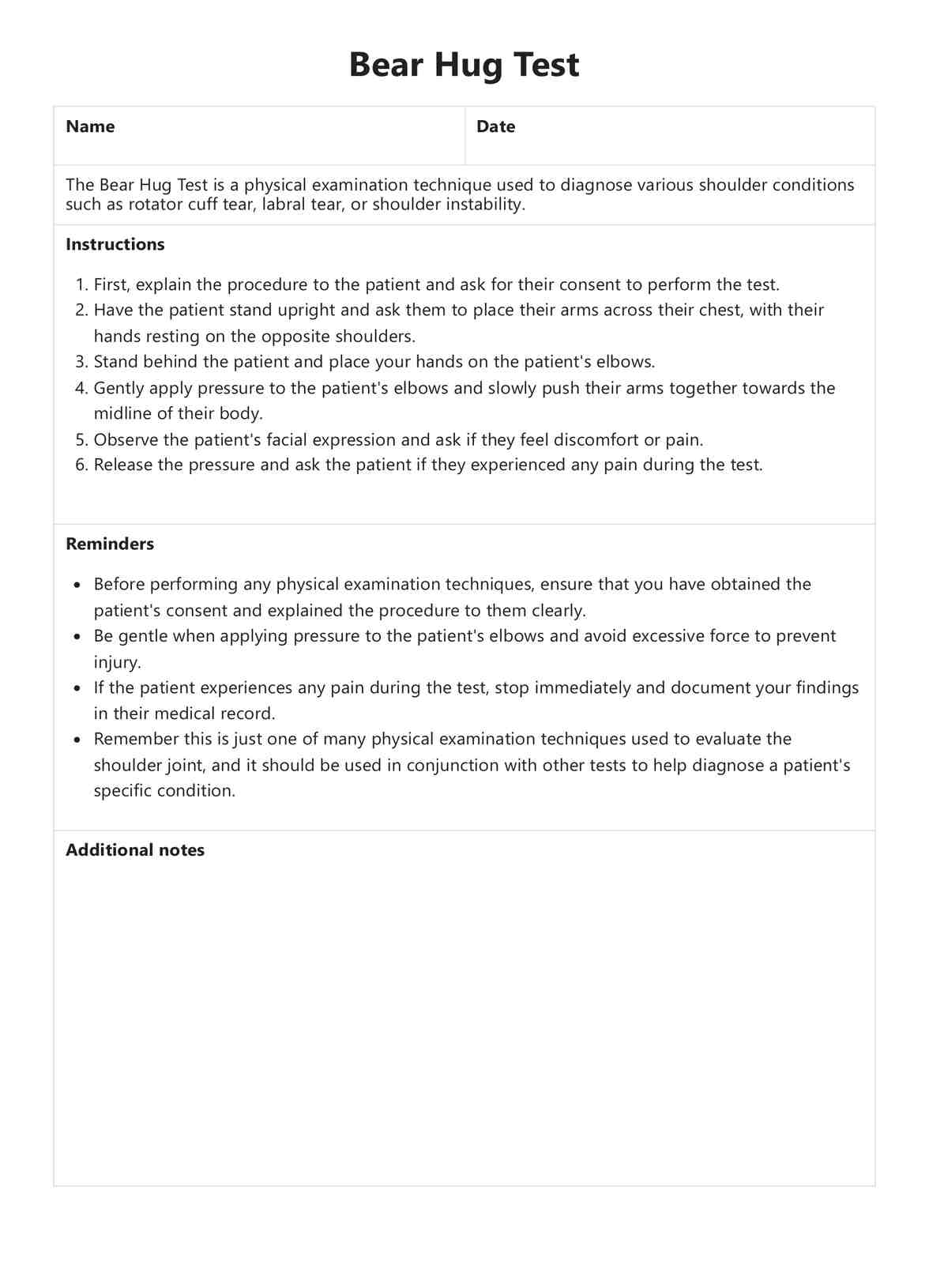Ask your patient to place one arm across their shoulder to perform the test. Then, put pressure on their elbow with your arm and ask them to resist. If there is pain or discomfort during the test, it may be indicative of an injury to the shoulder.

Bear Hug Test
Learn about the Bear Hug Test and get a free PDF with an example. Discover how to use this exam to assess your patient's shoulder condition.
Use Template
Bear Hug Test Template
Commonly asked questions
The Bear Hug Test measures the strength and stability of the shoulder joint. It assesses various shoulder issues, including rotator cuff tears, impingement, tendinitis, and instability.
The Bear Hug Test is a reliable indicator of shoulder injuries and has been used in clinical research studies. However, it is essential to note that it is not a diagnostic tool and should be used as part of a complete evaluation by a medical professional.
EHR and practice management software
Get started for free
*No credit card required
Free
$0/usd
Unlimited clients
Telehealth
1GB of storage
Client portal text
Automated billing and online payments











